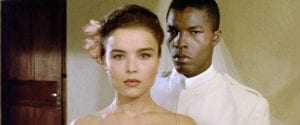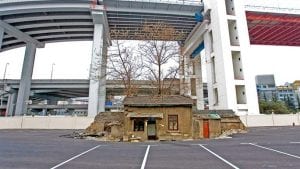
Giulia Boschi as Aimée and Isaach de Bankolé as Protée
A review of Claire Denis’s 1988 directorial debut Chocolat
I’ve recently acquired an Artificial Eye Collection of Claire Denis movies. By no means an exhaustive anthology of her work – there are just four films (Chocolat, Nénette et Boni, Beau Travail and White Material) – it provides the introduction to her oeuvre I was hoping for. Having read a lot about Denis’s films, and long harbouring the suspicion that I have long overlooked her, I decided to have a binge. I should add that I have seen 2009’s White Material before and that, while I found it unsettling and beautifully photographed, I don’t think I quite gave it the attention it deserved. Continue reading

 Robert De Niro in Once Upon a Time in America (1984)
Robert De Niro in Once Upon a Time in America (1984) Norman Rockwell, Breaking Home Ties, 1954
Norman Rockwell, Breaking Home Ties, 1954